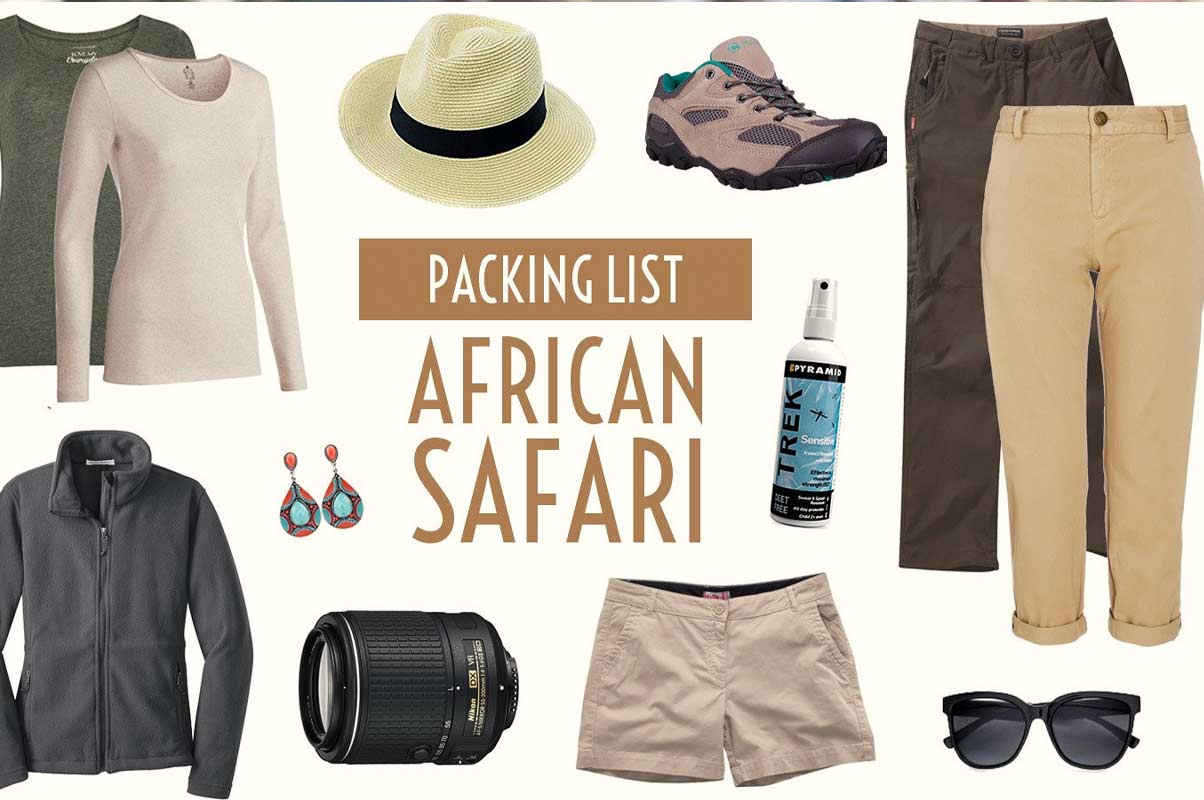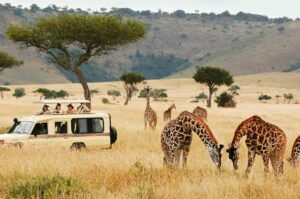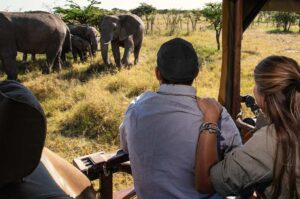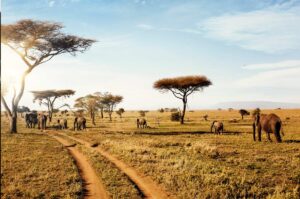Overview
Serengeti National Park is Africa’s most famous wildlife destination. Known for the largest concentration of game on the continent and the Great Migration of over a million wildebeest, this UNESCO World Heritage Site spans 15,000 km² (6,000 sq. miles), making it Tanzania’s second-largest park.
The park’s name, Serengeti, comes from the Maasai language, meaning “endless plains,” perfectly describing its expansive grasslands. Its iconic landscapes and diverse wildlife make it a premier destination for nature enthusiasts.
KEY FEATURES
Wildlife Highlights
Serengeti is home to a staggering array of wildlife, including:
- Predators: 4,000 lions, 1,000 leopards, 225 cheetahs, and 3,500 hyenas.
- Herbivores: Over 1 million wildebeest, 200,000 zebras, and 300,000 gazelles.
- Big Five: Lion, leopard, elephant, buffalo, and rhino.
- Rare Species: Pangolin, East African Oryx, wild dog.
THE GREAT MIGRATION
One of the Seven Natural Wonders of the World, the annual migration involves massive herds traversing 1,000 km in search of water and fresh grazing. Mega-herds stretch up to 40 km, providing dramatic predator-prey interactions.
- River Crossings: The Mara and Grumeti Rivers are famous for their treacherous crossings, where crocodiles and strong currents challenge the migrating animals.
- Year-Round Viewing: The migration moves in a circular pattern between the Serengeti and Masai Mara, influenced by rainfall.
KEY LANDMARKS
- Simba Kopjes: Granite outcroppings where lions often rest.
- Retina Hippo Pool: Home to around 200 hippos.
- Seronera River: A wildlife-rich water source.
- Grumeti and Mara Rivers: Known for dramatic wildebeest crossings.
- Lobo Valley: Offers sightings of elephants and big cats.
LANDSCAPES
The park’s landscapes vary dramatically, including:
- Savannahs dotted with acacia trees.
- Grasslands stretching to the horizon.
- Rising mountains, lakes, and swamps.
This diversity not only supports abundant wildlife but also creates an unparalleled visual experience.
INTERESTING FACTS
- Calving Season: February is a spectacular time when 8,000 wildebeest calves are born daily.
- Serengeti inspired iconic scenes from Disney’s The Lion King.
- Listed as a UNESCO World Heritage Site for its natural beauty and ecological significance.
TRAVEL AND ACCOMMODATION
Accessibility
- By Road:
- Arusha to Serengeti: 5 hours.
- Ngorongoro to Serengeti: 2 hours.
- Lake Manyara to Serengeti: 3.5 hours.
- Tarangire to Serengeti: 4 hours.
- By Air:
- Flights from Arusha take 1 hour (€238 per person, one way).
Accommodation
- Recommendation: Luxurious Or Mid-range Lodges and Tented camp offering proximity to nature and a tranquil atmosphere.
TIPS FROM EXPERTS
- Duration of Stay: At least two days; many suggest a week for a more immersive experience.
- Best Time to Visit: Depends on rainfall patterns, but guides can predict migration movements accurately.
- Activities:
- Witness the Great Migration.
- Explore the Serengeti’s diverse ecosystems.
- Spot the Big Five.
Why Visit Serengeti National Park?
The Serengeti offers a soul-stirring experience, combining epic wildlife encounters, diverse landscapes, and a connection to the natural world. Whether it’s the roar of a lion, the thundering hooves of migrating wildebeest, or the serenity of endless plains, the Serengeti is a place that leaves an indelible mark on all who visit.
Ready to explore the Serengeti?
Check our Tanzania safaris for inspiration or contact us for personalized advice to create your dream itinerary.
- info@lightsonafrica.com
- +255789762924





